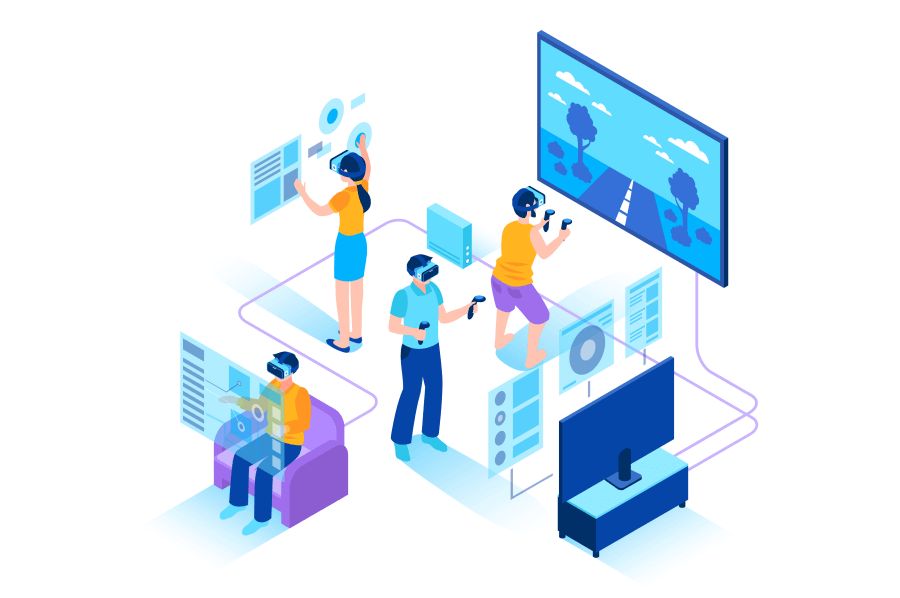How Metaverse Can Help HR Create a Better Working Environment?

Metaverse provides a virtual space that can provide a close-to-real-life experience for both recruiters and candidates during remote or hybrid recruitment.
Two years ago, the idea of having a hybrid workforce raised many eyebrows. But today, it has become an integral part of every workforce structure. And people have got something new to question - 'the idea of working in the Metaverse.'
Today, employees wish to work in a hybrid organisation. However they are also keen to see if their organisation has any plans to enter into the Metaverse as well. According to a survey by Owl Labs, almost 47% of employees want companies to adopt 'office metaverse' in the future. This is because employees believe metaverse will improve hybrid working. Moreover, 65% of the respondents believed that metaverse could improve flexibility within their organisation.
HR professionals are already focusing on introducing and implementing the hybrid working right. Could introducing metaverse help HR managers create a better working environment? Let's find out.
Hiring and Onboarding in Metaverse
Remote and hybrid working continue to remain popular among both employers and employees. HR professionals usually use virtual tools for interviewing. But the absence of clear non verbal cues, delay in transmission of messages, connectivity issues and many other hindrances can flatten the conversation. Candidates may also fail to make a lasting first impression due to these reasons.
To solve these recruiting woes, HR will have to find new ways of hiring with technological advancement. Experts believe that companies will include metaverse in their hiring process for better hiring experience. Instead of looking at each other from different screens, recruiters will be able to invite the applicant's nearly identical avatar in their virtual office space. Interviewing in metaverse will be especially beneficial while recruiting for remote or hybrid roles. This virtual space will be able to provide both recruiter and applicant a close to real life experience. As a result, the whole process will become far less dehumanised and will open new avenues for people to engage.
Immersive Training Tools:
Imparting proper training to the workforce scattered across different regions is another bottleneck HR often faces. However, providing a practical experience to employees located in different geographical boundaries is not easy. In this scenario, digital twins in Metaverse can improve the training experience.
Digital twins are replicas of a product or a place that can be used to provide users a real-time experience. Managers can create a virtual replica of a product or a physical space in the metaverse. The trainees can join through their avatars, understand the ropes and ask questions. Mentors can even ask trainees to practically solve the issue. And if the outcome comes wrong, they can simply go back to the twin's original version.
This way the employers are able to provide a more practical experience and employees are able to retain more information. This will also reduce the chances of errors when employees would be performing the tasks in real-time.
Improved Connections:
Overcoming the sense of disconnection is crucial to build better relationships between teams. Through current technologies, managers have created break rooms- a space for employees to interact. But the compulsion for every employee to join and initiate ice breakers may make conversations feel a little forced. It is pretty hard to replace the random coffee break or lunch hour interactions between employees. However experts believe that working in the metaverse could bring the sense of spontaneity a workplace has. Just like an office setting, employees would bump into each other in corridors and start conversations. The only difference will be that they would be talking through their avatars. This could bring a better sense of connectivity as they are free to roam around and choose to talk to whoever they wish to, unlike being confined in the break rooms.
Takeaway:
Indian companies are not lagging anywhere when it comes to adopting cutting-edge technologies. Introducing metaverse will go well with hybrid organisations, helping managers create better hiring decisions and bringing people together. However the vision of introducing metaverse in the business comes with its own set of challenges.
One of the key hurdles is to make the necessary hardware such as AR/VR headsets and cameras accessible to everyone to achieve the metaverse experience. This could be a challenge considering how the workforce is distributed in different geographical boundaries. Also, ensuring secure and encrypted conversations in these virtual rooms will be another challenge the managers will need to solve.
Another question that remains unanswered is how employees working on-site will comfortably interact with others in the metaverse. Would they feel more engaged in a virtual conversation where they'd have to wear headsets to interact with the colleagues sitting right next to them? How exactly would that improve productivity and experience and won't result in employee burnout? Business leaders will need to take their time to find solutions to these concerns. Even though it seems pretty early, the metaverse will change everything. And to successfully enter and operate in the MR space, companies will have to figure out solutions for these hurdles.